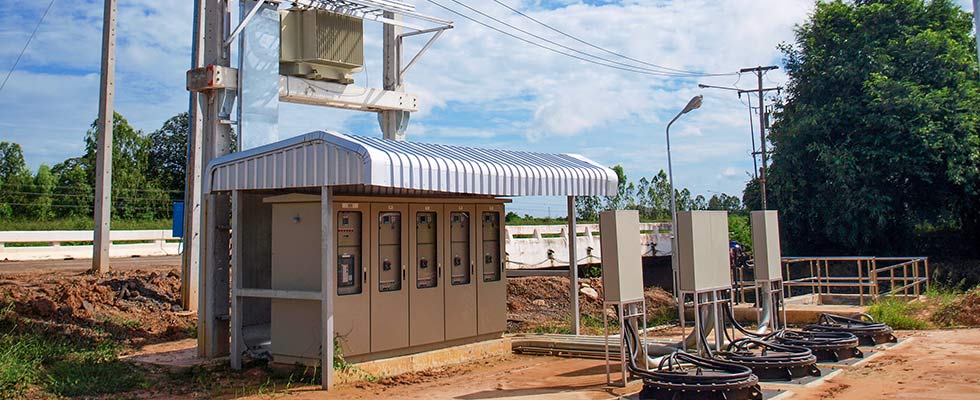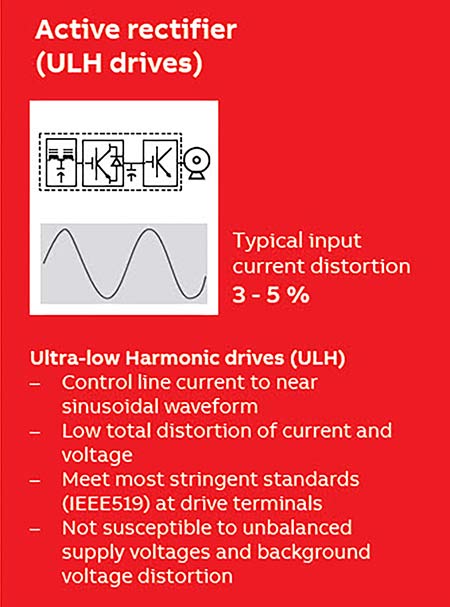
The advantages of using a variable frequency drive (VFD) with a motor for precise flow control, resulting in energy and cost savings, are discussed often. Conversely, the features of a VFD that minimize line disruptions, such as harmonics, and operate better across various line conditions are often overlooked. Selecting the right drive for the application is critical for performance and reliability.
Active front-end (AFE) drives use insulated gate bipolar transistors (IGBTs) instead of a diode-based rectifier to convert alternating current (AC) to direct current (DC). The IGBTs turn on and off rapidly, allowing for precise control of the input current waveform that creates a smooth AC current into the drive. AFE drives offer a compact solution that meets the Institute of Electrical and Electronics Engineers (IEEE) 519-2022 standards at the input terminals.
Minimize Line-Side Harmonics
Harmonic distortions are caused by disruptions or noise on the input line. Harmonics can cause a variety of problems that can result in reduced lifetime or premature failure of upstream utility equipment. Many things, including power supplies, light-emitting diode (LED) lighting, uninterruptable power supply (UPS) systems and VFDs, can cause harmonics when they draw current in a nonlinear manner.
When minimizing harmonics at the source is important, AFE drive technology is often considered the best way to mitigate these harmonics, as it actively controls the switching of the line-side IGBTs. With the help of an LCL filter (a combination of inductors and capacitors), it draws a smooth waveform from the power grid, which means AFE drives create minimal harmonic distortion.
Standard Performance Across All Line Conditions
AFE drives offer more reliable performance across varying input line conditions. AFE drives can actively compensate for unbalanced lines. Because of this, AFE drives can operate better than multipulse transformer solutions under unbalanced line conditions because distortion in the line voltage caused by other nonlinear loads decrease the ability of the multipulse rectifiers to cancel the phase-shifted harmonics.
AFE drives can also operate on low-line conditions, unlike VFDs that include a multipulse transformer, the AFE allows the drive to regulate the DC bus during low-line conditions and provide full voltage to the motor. AFE drives are designed to tolerate voltage sags without tripping or overheating the motor because they can draw additional current from the line input to charge the DC bus to make up for the reduced input voltage. Finally, AFE drives can maintain unity power factor over the entire load and speed range and ensure the power factor is never leading, which can cause unstable operation of backup generators.
Design Components for Reliable Performance & Cost Savings
In addition to mitigating harmonics and providing stable performance across unstable line conditions, an AFE design offers other advantages that contribute to performance and a lower total cost of ownership. AFE technology eliminates the need for a multipulse transformer or active filter components, which reduces footprint and weight of the unit. It also draws less current from the grid than drives that require a transformer or active filter, freeing up capacity to support additional loads.

An AFE VFD should be considered when users need to control harmonics, meet IEEE 519 and maintain consistent pumping performance in the face of poor power quality. This will avoid costly additional components, such as harmonic filters, and help prevent negative impact on power quality, cost and overall reliability.


